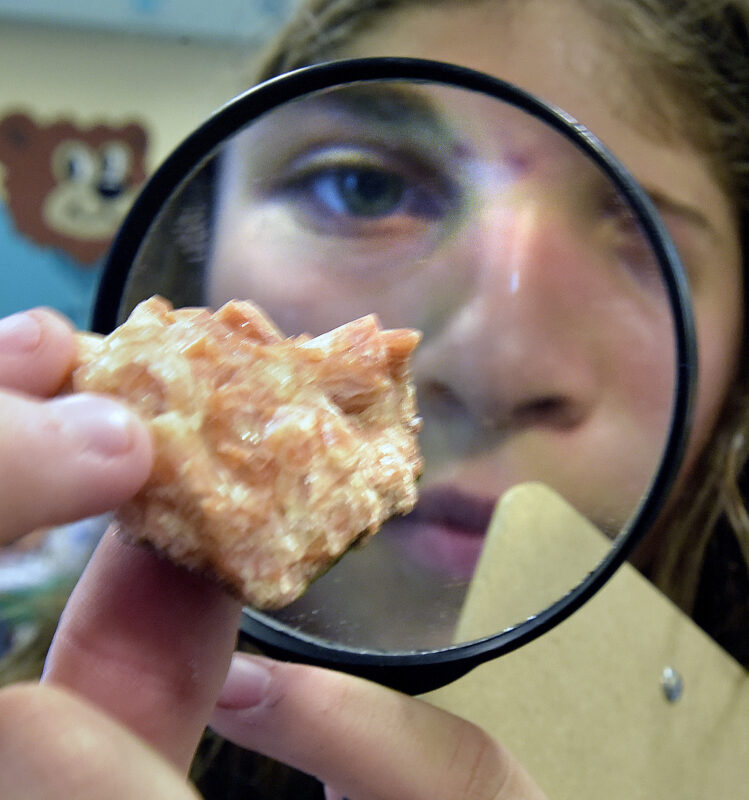By Raychel Stewart
Signal Staff Writer
As the world turns into a direction that revolves around science, technology, engineering and math, astronomy classes and programs become an important part of education, especially in younger children.
Astronomy education can begin an early as kindergarten, which can allow kids to have a better understanding of the field when they get older, according to College of the Canyons astrology and physical science professor Teresa Ciardi.
“Exposing kids early gets them really excited early, but if it’s approached in a hands-on type of way,” said Ciardi, who also advises the aerospace and science teams at COC. “Kids don’t want to read about science, they want to do science, and they even want to do it as young as kindergarten.”

Astronomy is a significant part of STEM programs that incorporate learning in science, technology, engineering and math, something Ota Lutz, lead of the STEM elementary and secondary education at Jet Propulsion Laboratory at California Institute of Technology, said is a key part of education now that society relies heavily on these subjects.
“The biggest importance is that kids see themselves in different career fields,” said Lutz. “Most of us know careers that are in our family, if kids don’t have experience in STEM fields, it’s not a career option. When little kids can see themselves as being success, that carries over as they grow up. It’s a very powerful thing to give kids the opportunity to choose their own path.”
Elementary, middle school astronomy programs
A number of STEM programs are offered in the Santa Clarita Valley, including SCV International Charter School, which uses project-based learning through iLead programs which gets students to engage with projects and conduct research in multiple subjects, including STEM and astronomy.

“We, as people, are explorers in the fundamental DNA if our beings,” said Kathleen Fredette, spokeswoman and director of STEM initiatives at iLead schools. “We are constantly looking for ways to optimize our lives, our cultures, humanity and this also explains why our desire is to explore space as well. This can blow the doors off of limitations we place on ourselves, this offers young people a horizon to see what others have done.”
Incorporating STEM programs in elementary schools have become a standard staple in education, since many schools require students to participate in science fairs and spend a certain amount of time learning physical sciences during class time.
SCVi, just like other schools, teach students according to the common core state standards, which require all schools to teach subjects in a research and evidence based, concise way, which includes math and science lessons.
For more information regarding SCVi and their iLead program, visit the school’s website at https://bit.ly/3xEtDen.
JPL offers several at-home astronomy experiments and lessons available for students of all ages and can be refined by grade level and topics.
Experiments offered through JPL’s website use everyday items which can be found around the house and won’t require the purchasing of tools. Participants can create a cardboard rover or learn the distance between earth and the sun.
“Students can do these experiments at home and develop all these skills which can be transferred to all the different areas of life,” Lutz said. “Kids can learn how to solve a problem logically and on their own, then they learn that they don’t have to have other people make decisions for them.”
For more information regarding the JPL astronomy activities, visit https://go.nasa.gov/3cZAbMV.
High school
College of the Canyons offers high school and college students across the SCV to join the aerospace and science team, which gives students the opportunity to participate in activities and competitions related to astronomy.
While working on the team, students are able to work alongside professionals and professors in the field of astronomy to design, fabricate and launch scientific projects from the National Aeronautics and Space Administration into space, but students have a majority of control over each project, Ciardi said.
“When you give students the freedom to solve their own problem, they use critical thinking skills to find that solution,” Ciardi added. “They start to get ideas based on their own human experiences and they begin to develop those critical thinking skills without being prompted to, so the sooner a child begins, the sooner they will develop that necessary skill.”

Ciardi added writing and communication is another skill not usually associated with sciences, but is a significant part of the field.
“Once you go through the hands-on process, you have to communicate your results with others,” she added. “You also have to record in writing what you did during the research and what the outcome was. So, students in these programs build all sorts of these skills and they might not even realize it.”
For more information on COC’s Aerospace and Science Team, visit the club’s website at https://bit.ly/3gJPAmM.













